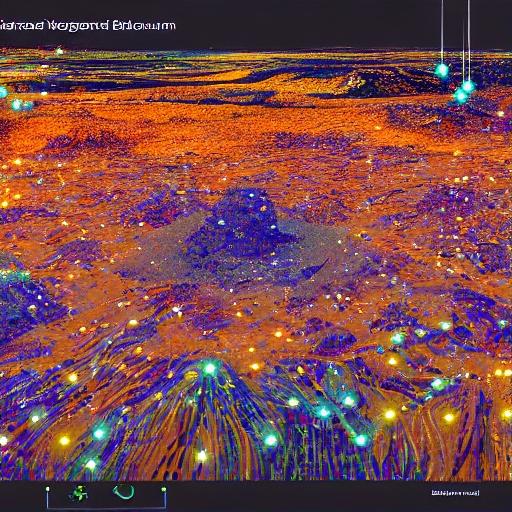Since its introduction in 2014, Ethereum has revolutionized the blockchain technology landscape. As an open-source, decentralized platform, Ethereum offers a powerful infrastructure for building and deploying decentralized applications (dApps), smart contracts, and tokens. But how exactly does Ethereum fit into the blockchain ecosystem?
At its core, Ethereum is a decentralized virtual machine that operates on a network of computers called nodes. These nodes validate, execute, and record transactions across the Ethereum network. The Ethereum Virtual Machine (EVM) enables developers to execute code and run applications on the blockchain, ensuring transparency, security, and immutability.

One of Ethereum’s key features is its ability to execute smart contracts, which are self-executing agreements with predefined rules and conditions. Smart contracts are coded on the Ethereum blockchain, allowing them to be transparent and tamper-proof. These contracts eliminate the need for intermediaries by automatically executing actions when predefined conditions are met.
Ethereum’s native cryptocurrency, Ether (ETH), plays a vital role in the platform’s operations. Acting as both a digital currency and fuel for executing smart contracts, Ether incentivizes miners to validate transactions and secure the network. It also allows users to interact with dApps and execute transactions on the Ethereum network.
With Ethereum, developers can create their own unique tokens or digital assets using the ERC-20 token standard. This functionality has paved the way for Initial Coin Offerings (ICOs), where startups can raise funds by issuing their own tokens on the Ethereum blockchain. The ERC-20 standard ensures interoperability, making these tokens usable across different dApps and exchanges.
Furthermore, Ethereum’s ecosystem is enriched by various protocols and tools that extend its functionality. These include decentralized storage systems like IPFS, identity solutions like uPort, and decentralized finance (DeFi) platforms like Compound and Uniswap. These decentralized applications utilize Ethereum’s infrastructure to provide innovative solutions in various domains.
Unlike its predecessor Bitcoin, Ethereum’s focus extends beyond digital currency. Ethereum’s founder, Vitalik Buterin, aimed to create a platform that allows developers to build decentralized applications and leverage the potential of blockchain technology in new and exciting ways. Ethereum’s flexibility, scalability, and developer-friendly environment have attracted a vibrant community, contributing to its rapid growth and widespread adoption.
However, Ethereum has faced challenges related to scalability and network congestion. As the popularity of the platform has increased, scalability issues have emerged, leading to high fees and slower transaction speeds. To address these concerns, Ethereum is undergoing a major upgrade, known as Ethereum 2.0 or Eth2, which aims to enhance scalability, security, and sustainability.
Ethereum 2.0 introduces a new consensus mechanism called Proof of Stake (PoS), replacing the existing Proof of Work (PoW) model. This upgrade will greatly increase the network’s capacity and improve transaction speeds, enabling it to handle a significantly larger number of transactions per second. Eth2 also plans to introduce shard chains, allowing for parallel processing of transactions and smart contracts.
As Ethereum continues to evolve, its significance within the blockchain ecosystem remains unparalleled. With its advanced features, support for smart contracts and tokens, and expanding ecosystem, Ethereum has become a formidable platform for developers and businesses alike. As it transitions to Ethereum 2.0, the future looks promising for Ethereum as it aims to tackle scalability issues and solidify its position as a leading blockchain platform.
